Search
Remove Ads
Advertisement
Summary 
Loading AI-generated summary based on World History Encyclopedia articles ...
Search Results
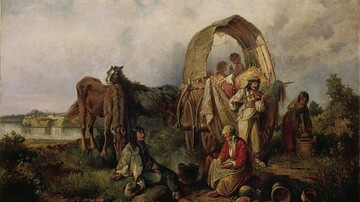
Definition
Romani Language
Romani is an Indo-European language, belonging to the Indic subbranch which includes Sanskrit and Hindi. Because of the Romani diaspora throughout Europe and West Asia, it developed in close contact with European and Iranian languages. It...
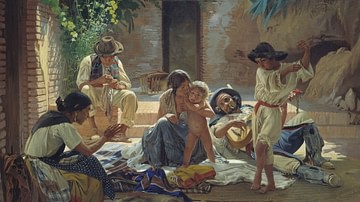
Definition
Romani
Romani is an umbrella term used to describe a diverse ethnolinguistic group of people with a historical presence in Europe and West Asia. The historically common term 'Gypsy' is based on the myth that they came from Egypt. In reality, the...
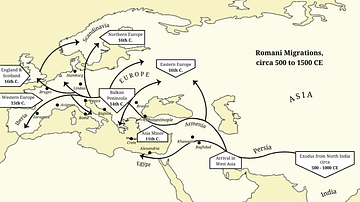
Image
Map of Romani Migration in the Middle Ages
Map showing the movement of the Romani people between approximately 500 and 1500 CE. The dates used on this map are commonly accepted approximations based on historical accounts and linguistic evidence. Some dates, such as the timeframe in...

Video
Forgotten History: the Romani (Gypsy) Migration from India to Europe
The Romani (colloquially known as the "Gypsies") are a community of European itinerants with surprising origins in northwest India. In this video, we explore the fascinating histories of two distinct Romani groups: the Roma and the Sinti...
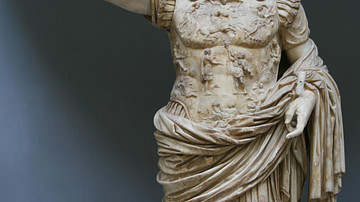
Article
Augustus' Political, Social, & Moral Reforms
Augustus is well known for being the first Emperor of Rome, but even more than that, for being a self-proclaimed “Restorer of the Republic.” He believed in ancestral values such as monogamy, chastity, and piety (virtue). Thus, he introduced...

Definition
Josef Mengele - The Infamous Nazi Doctor of Auschwitz
Josef Mengele (1911-1979) was a Nazi doctor who performed horrific pseudo-scientific experiments on detainees in the Auschwitz concentration camp where he was a medical officer from 1943 to 1945. Thousands of Mengele's victims endured bizarre...

Definition
Auschwitz
Auschwitz was a concentration and extermination camp in German-occupied Poland operated by the Nazi SS from 1940 to 1945. Around 1.1 million people died at the Auschwitz complex from overwork, malnutrition, disease, and in the gas chambers...
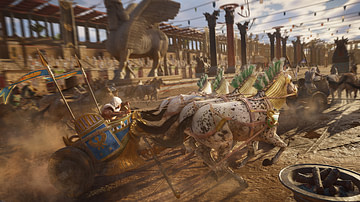
Definition
Circus Maximus
The Circus Maximus was a chariot racetrack in Rome constructed in the 6th century BCE. Used for other events such as the Roman Games and gladiator fights, it last hosted chariot races in the 6th century. Partially excavated in the 20th century...

Definition
Jupiter
Among the many gods of the Romans, Jupiter, the son of Saturn, was the supreme god, associated with thunder, lightning, and storms. The first citizens of what would become Rome believed they were watched over by the spirits of their ancestors...

Article
Mythological Re-Enactments in Ancient Roman Spectacle
To this day the ancient Romans remain infamous for their dramatic use of spectacle and other forms of entertainment. A lesser known variation of Roman spectacle is the mythological re-enactments that took place during the ludi meridiani (midday...